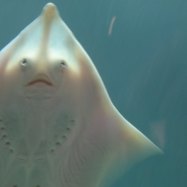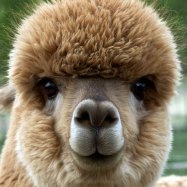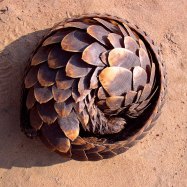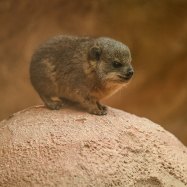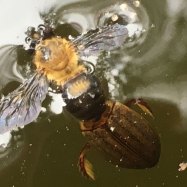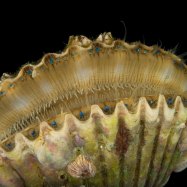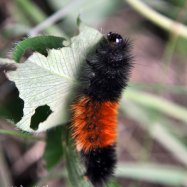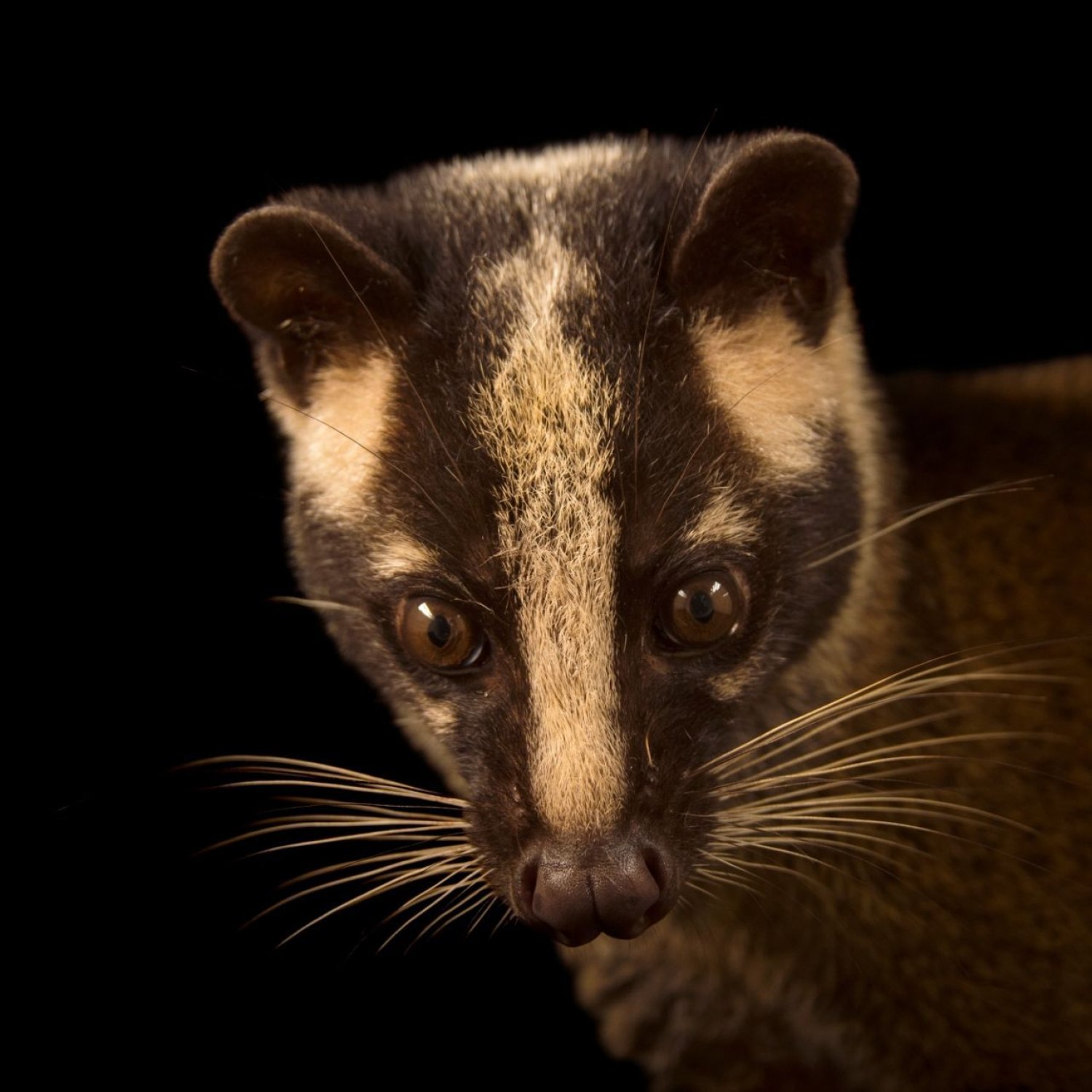
Masked Palm Civet
48-53 cm (18.9-20.9 in)
The Masked Palm Civet is a slender and beautiful animal found in Southern China. With a length of 48-53 cm, it belongs to the Viverridae family. Its long tail helps it with balance and movement. #Animals #China #Wildlife
Animal Details Summary:
Common Name: Masked Palm Civet
Kingdom: Animalia
Habitat: Forests, agricultural areas, urban areas
The Fascinating Masked Palm Civet: A Carnivorous Creature of Southern China
The Animalia kingdom is home to a vast array of creatures, each with its unique features and characteristics. One such animal that has recently gained attention is the masked palm civet, scientifically known as Paguma larvata. This member of the Chordata phylum and Mammalia class belongs to the Carnivora order and Viverridae family. Let's delve into the world of this incredible animal and discover what makes it so fascinating Masked Palm Civet.A Diverse Habitat and Geographical Distribution
The masked palm civet is predominantly found in Asia, specifically in southern China. However, it can also be spotted in a few other countries in the region, such as Taiwan and Vietnam. This diverse geographical distribution is mainly due to its adaptability to various habitats.Habitat: Forests, agricultural areas, and urban spaces are all suitable habitats for masked palm civets. They have a flexible diet, allowing them to thrive in both natural and man-made environments. These creatures are also known to make their homes in abandoned buildings, making them highly adaptable to living in urban areas.
Feeding Method: As mentioned earlier, the masked palm civet is a carnivorous animal, which means that it primarily feeds on meat. However, it also has a diverse diet that can include fruits, nuts, and insects. This flexibility in its feeding method contributes to its ability to survive in various habitats Marsh Frog.
The Unique Physical Features of the Masked Palm Civet
At first glance, the masked palm civet may appear to be an ordinary mammal. However, upon closer inspection, one can observe its unique physical features that set it apart from other creatures.Animal Coloration: The masked palm civet's most distinctive feature is its fur coloration. Its body is usually dark brown or black, with a distinct white mask on its face, giving it its name. This feature is not just for aesthetic purposes; it also serves as camouflage in the dark forests, where they are primarily active at night.
Body Shape: The masked palm civet has a slender body, with a long tail that makes up almost half of its overall length. This physique is ideal for its climbing abilities, allowing it to move quickly and effortlessly through the treetops.
The Lifestyle and Behavior of the Masked Palm Civet
The masked palm civet is a solitary creature, preferring to live and hunt alone. However, they do come together during mating season, which typically occurs during the warmer months of the year. These creatures are also territorial and mark their territories using their scent glands.Length and Weight: On average, a masked palm civet measures between 48-53 cm (18.9-20.9 in) in length, with the tail accounting for approximately 20-25 cm of that length. They typically weigh between 2-5 kg (4.4-11 lbs), making them a relatively small mammal.
The Threats Faced by the Masked Palm Civet
Unfortunately, like many other animals, the masked palm civet is facing some significant threats that have put its population at risk. One major threat is poaching, as its fur is highly valued for its softness and richness in color. They are also hunted for their meat, which is considered a delicacy in some countries.Another threat to the masked palm civet is habitat loss due to deforestation and urbanization. As their habitats shrink, the population of these creatures declines, making them more vulnerable to extinction.
Conservation Efforts to Protect the Masked Palm Civet
Thankfully, numerous conservation efforts are in place to protect the masked palm civet and ensure its survival for generations to come. One such initiative is the establishment of protected areas, such as national parks and reserves, to preserve their natural habitats. This also includes programs that educate the public about these animals and the importance of preserving their habitats.Another crucial step in conservation is regulating and enforcing laws and policies that protect these animals from poaching and trafficking. The cooperation and commitment of governments and communities are vital in successfully conserving the masked palm civet.
Conclusion: A Unique and Valuable Creature
In conclusion, the masked palm civet is an extraordinary creature with a diverse habitat and unique physical attributes. Its adaptability and flexibility in its diet and lifestyle make it a valuable member of the Animalia kingdom. However, it is facing significant threats, such as poaching and habitat loss, that put its population at risk. Through conservation efforts and awareness, we can protect and preserve this fascinating carnivorous animal of southern China, the masked palm civet.

Masked Palm Civet
Animal Details Masked Palm Civet - Scientific Name: Paguma larvata
- Category: Animals M
- Scientific Name: Paguma larvata
- Common Name: Masked Palm Civet
- Kingdom: Animalia
- Phylum: Chordata
- Class: Mammalia
- Order: Carnivora
- Family: Viverridae
- Habitat: Forests, agricultural areas, urban areas
- Feeding Method: Carnivorous
- Geographical Distribution: Asia
- Country of Origin: China
- Location: Southern China
- Animal Coloration: Dark brown or black with white mask on the face
- Body Shape: Slender body with long tail
- Length: 48-53 cm (18.9-20.9 in)
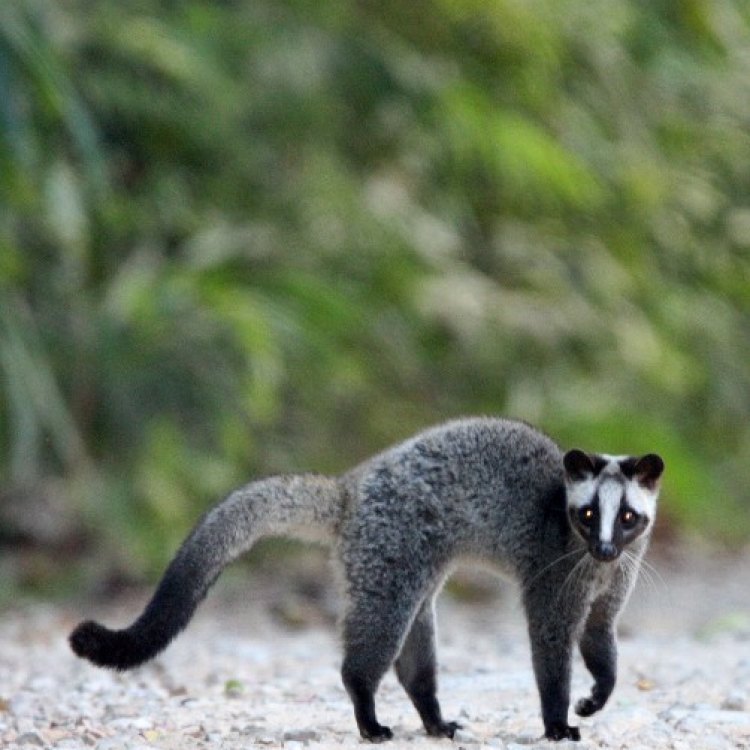
Masked Palm Civet
- Adult Size: Small to medium-sized
- Average Lifespan: Up to 20 years
- Reproduction: Viviparous
- Reproductive Behavior: Solitary
- Sound or Call: Variety of vocalizations including growls, hisses, and screams
- Migration Pattern: Non-migratory
- Social Groups: Solitary
- Behavior: Nocturnal
- Threats: Habitat loss, hunting for fur and meat
- Conservation Status: Least Concern
- Impact on Ecosystem: Seed dispersal
- Human Use: Fur trade
- Distinctive Features: White mask on the face
- Interesting Facts: They are known for their ability to eat coffee cherries, which contributes to the production of Kopi Luwak, one of the most expensive coffees in the world.
- Predator: Large birds of prey, carnivorous mammals
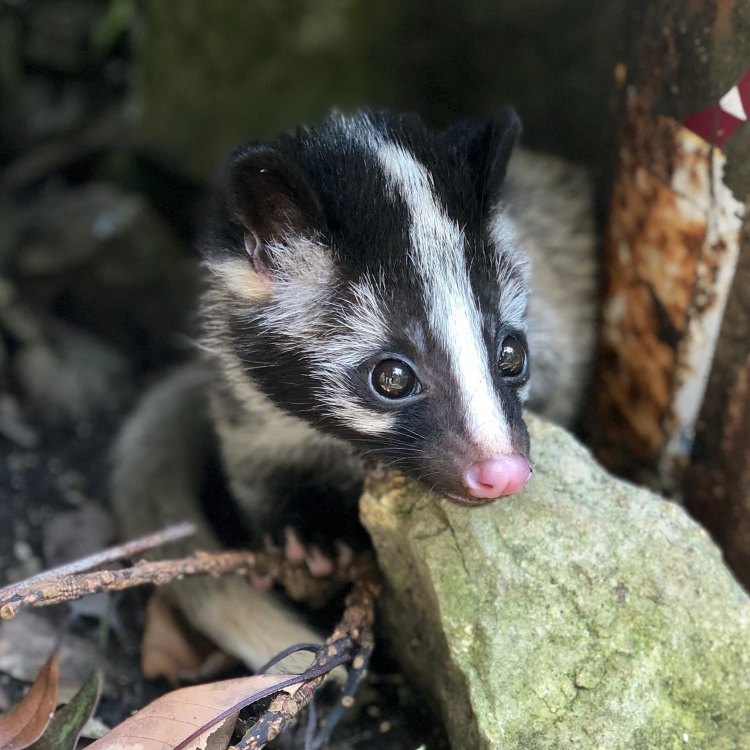
Paguma larvata
Mystery of the Masked Palm Civet: The Enigmatic Creature with a Surprising Impact on our Ecosystem
Nature never ceases to amaze us with its diversity. From the majestic lions to the elusive leopard, every creature has its unique charm. Some animals have been in the spotlight for centuries, while others remain hidden and undiscovered until recent times. One such mysterious creature is the Masked Palm Civet, also known as the Asian Palm Civet, a small to medium-sized mammal that roams the tropical forests of Southeast Asia PeaceOfAnimals.Com.The Masked Palm Civet, scientifically known as Paradoxurus hermaphroditus, is a member of the Viverridae family, commonly referred to as the civet family. It is a fascinating creature that has captured the attention of researchers and nature lovers alike due to its intriguing features and surprising behaviors.
In this article, we will delve into the world of the Masked Palm Civet and uncover its secrets, from its distinctive appearance to its impact on the ecosystem and human use.
A Dazzling Mask that Hides a Solitary Nature
One of the most striking features of the Masked Palm Civet is, as the name suggests, its distinct white mask that covers its face. The mask runs from its forehead to its snout, giving it a mysterious appearance. This feature, along with its long, sleek body and short, powerful legs, makes the civet a unique and easily identifiable creature.Despite its eye-catching appearance, the Masked Palm Civet is a solitary animal. Unlike other civet species that live in groups, this species prefers to spend its days and nights alone. It is mostly active during the night, making it a nocturnal creature Muttaburrasaurus. This behavior gives it an elusive quality and makes it challenging to study in the wild.
A Long and Fulfilling Life Span
The Masked Palm Civet is not only unique in its physical appearance but also in its lifespan. While many small mammals have a relatively short life expectancy, this creature can live up to 20 years in the wild. In captivity, they have been known to live even longer, with some individuals reaching 30 years of age.This extended lifespan is due to the civet's adaptability and resilience. It can thrive in a wide range of habitats, from tropical forests to agricultural areas, making it less vulnerable to environmental changes. This longevity also allows researchers to study the species for an extended period, leading to a deeper understanding of their behavior and biology.
The Enigmatic Reproductive Behavior of the Masked Palm Civet
The Masked Palm Civet follows a viviparous reproductive pattern, meaning they give birth to live young. Females have a gestation period of around 60 days, after which they give birth to two to four kits (baby civets) in a secluded den. The kits are born with their eyes closed and are entirely dependent on their mother for the first few weeks.Interestingly, little is known about the mating behavior of the Masked Palm Civet. It is believed that they are solitary even during the mating season, with males only seeking out females for a brief period. This lack of social interaction may also contribute to their elusive nature.
The Varied Vocalizations of the Masked Palm Civet
While the Masked Palm Civet may be solitary in its social behavior, it is far from being a silent creature. In fact, it is known for its wide range of vocalizations, which include growls, hisses, and even screams. These vocalizations serve different purposes, from warning predators to attracting mates.The civet's vocal abilities are due to its well-developed vocal cords, which allow it to produce a distinct range of sounds. What is even more fascinating is that their vocalizations vary depending on their location. Civets in the wild tend to have a more diverse array of sounds compared to those in captivity, highlighting the importance of their natural habitat in their behavior.
Residing in One Place: The Non-Migratory Pattern of the Masked Palm Civet
One of the unique behaviors of the Masked Palm Civet is its non-migratory pattern. Unlike many animals that migrate to seek better resources or breeding grounds, this creature prefers to stay in one place throughout its lifetime. It has a small home range of about 50 acres, where it can find enough food and shelter.This behavior also makes the civet highly territorial, especially when it comes to its food sources. It has been reported that if the Masked Palm Civet finds a good feeding spot, it will continue to visit the area, leading to a buildup of feces and urine. This behavior is one of the reasons for the civet's negative reputation, as we will explore later in this article.
Threats to the Masked Palm Civet
Sadly, the Masked Palm Civet, like many other species, is facing various threats that put its survival at risk. One of the significant threats is habitat loss due to deforestation and human expansion. These actions not only disrupt the civet's natural habitat but also limit its food sources, making it difficult for them to survive.Another threat facing the Masked Palm Civet is the fur and meat trade. The civet's attractive coat has made it a target for hunters who seek to sell its fur in the international market. This demand for its fur has led to unsustainable hunting practices, with the species facing a high risk of extinction in some areas.
The Surprising Impact of the Masked Palm Civet on the Ecosystem
While the Masked Palm Civet may seem like any other small mammal in the forest, it plays a crucial role in its ecosystem. As a fruit-eating animal, it contributes significantly to seed dispersal. The civet's digestive system cannot fully break down the seeds it consumes, leading to them being dispersed in their feces in different areas.This process helps in the natural regeneration of plants and contributes to maintaining a healthy balance in the forest ecosystem. The disappearance of the civet would not only be a loss for the species itself but would also negatively impact the forest's health and biodiversity.
The Bittersweet Human Use of the Masked Palm Civet
Unfortunately, humans have also found a way to exploit the Masked Palm Civet for their gain. As mentioned earlier, the civet's feces, known as "civet coffee," has become a sought-after commodity in the market. It is believed that the civet eats only the finest coffee cherries, which then undergo fermentation in their digestive system, resulting in a uniquely flavorful coffee.The price of this coffee, also known as Kopi Luwak, is exorbitant, with a single cup costing around $80 in some countries. This demand has led to the capture and captivity of Masked Palm Civets for the sole purpose of producing civet coffee. This practice not only raises ethical concerns but also harms the civet's natural behavior and habitat.
An Elusive Prey for Predators
In the wild, the Masked Palm Civet is not entirely safe from predators. Large birds of prey, such as eagles and owls, pose a threat to the civet, especially the young. It is also hunted by carnivorous mammals, such as leopards and large cats, who see it as an easy prey due to its solitary behavior.Fortunately, the civet's exquisite abilities, such as its sharp claws and agility, allow it to defend itself against potential predators. Its keen sense of smell and ability to climb trees also help it stay out of harm's way.
The Enduring Mystery of the Masked Palm Civet
The Masked Palm Civet may not have the same level of fame as other animals, but its enigmatic nature and role in the ecosystem make it a fascinating creature. From its solitary behavior to its surprising impact on the environment, there are still many mysteries surrounding this elusive mammal.However, one thing is for sure: the Masked Palm Civet deserves to be appreciated and protected, as it plays an essential role in maintaining the balance of our planet's delicate ecosystems. It is our responsibility to ensure that this mysterious creature continues to thrive for generations to come.
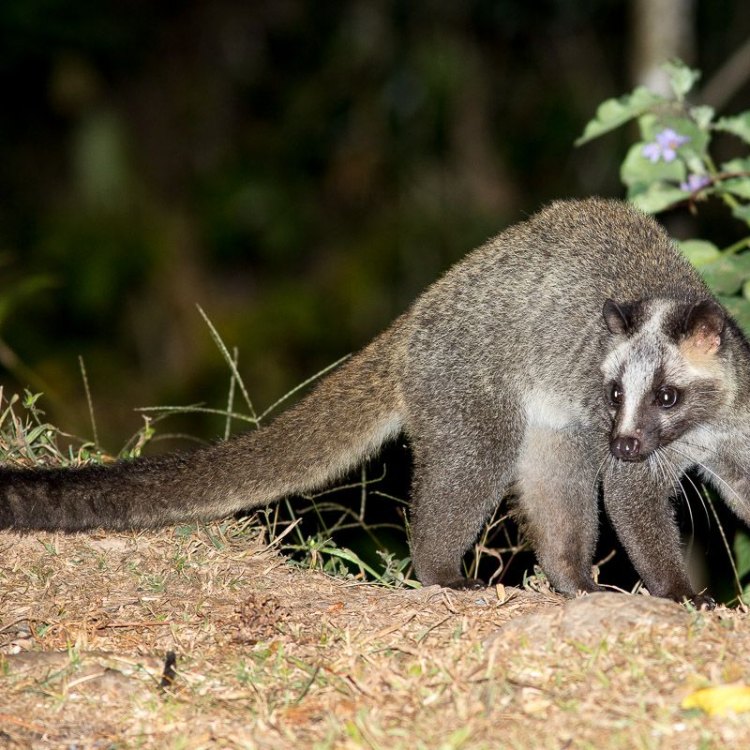
The Fascinating Masked Palm Civet: A Carnivorous Creature of Southern China
Disclaimer: The content provided is for informational purposes only. We cannot guarantee the accuracy of the information on this page 100%. All information provided here may change without prior notice.

